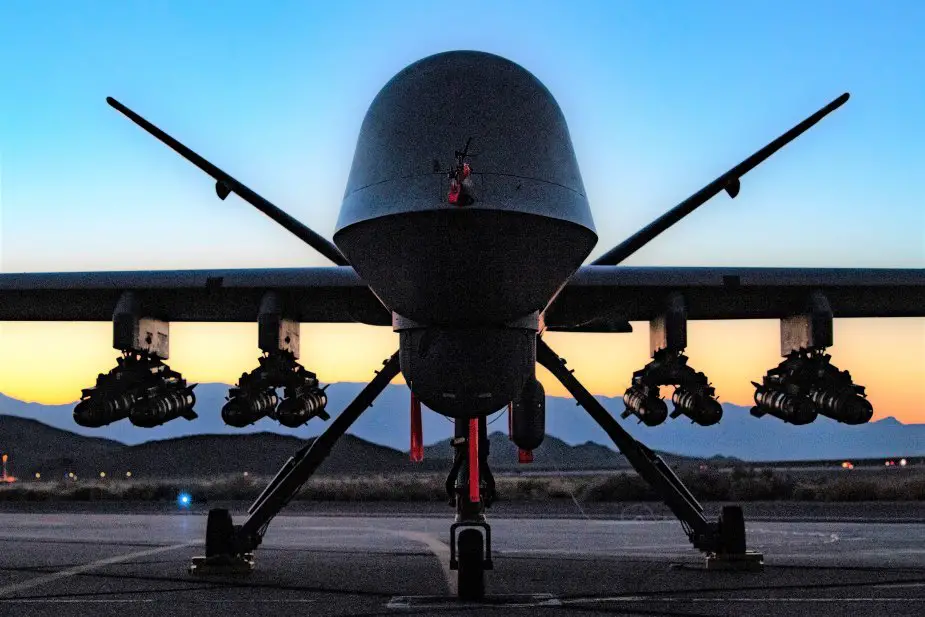Breaking news
U.S. Air Force performs first flight of MQ-9A Reaper with 8 Hellfire missiles.
The US Air Force announced that on September 10, a General Atomics MQ-9A Reaper flew for the first time with 8 Hellfire missiles. In its standard configuration the drone can carry 4 Hellfires.
Follow Air Recognition on Google News at this link
 General Atomics MQ-9A Reaper armed with 8 Hellfre missiles instaed of the usual four (Picture source: U.S. Air Force)
General Atomics MQ-9A Reaper armed with 8 Hellfre missiles instaed of the usual four (Picture source: U.S. Air Force)
This modernization of the aircraft was carried out as part of the operational flight program 2409 aimed at providing the drone with software to increase its capabilities. This is how the pick-up points usually reserved for bombs and tanks can now carry Hellfire missiles.
This evolution of the aircraft, which follows a need expressed by Air Combat Command and Air Force Special Operations Command, aims to strengthen the firing capabilities of the MQ-9 Reaper. "Doubling the firepower of this high endurance aircraft using Hellfires increases the lethality and agility of the MQ-9 during combat phases", reports Lieutenant Colonel Chmielewski, commander of the 556 test and evaluation squadron. The use of Hellfire missiles allows for a faster chain of engagement and thus to cope with complex combat situations, adds Lt Col Chmielewski.
he General Atomics MQ-9 Reaper (sometimes called Predator B) is an unmanned aerial vehicle (UAV) capable of remotely controlled or autonomous flight operations developed by General Atomics Aeronautical Systems (GA-ASI) primarily for the United States Air Force (USAF). The MQ-9 and other UAVs are referred to as Remotely Piloted Vehicles/Aircraft (RPV/RPA) by the USAF to indicate their human ground controllers.
The MQ-9 is the first hunter-killer UAV designed for long-endurance, high-altitude surveillance. In 2006, the then–Chief of Staff of the United States Air Force General T. Michael Moseley said: "We've moved from using UAVs primarily in intelligence, surveillance, and reconnaissance roles before Operation Iraqi Freedom, to a true hunter-killer role with the Reaper."
The MQ-9 is a larger, heavier, and more capable aircraft than the earlier General Atomics MQ-1 Predator; it can be controlled by the same ground systems used to control MQ-1s. The Reaper has a 950-shaft-horsepower (712 kW) turboprop engine (compared to the Predator's 115 hp (86 kW) piston engine). The greater power allows the Reaper to carry 15 times more ordnance payload and cruise at about three times the speed of the MQ-1. The aircraft is monitored and controlled by aircrew in the Ground Control Station (GCS), including weapons employment. The USAF operated 195 MQ-9 Reapers as of September 2016, and plans to keep the MQ-9 in service into the 2030s.



















